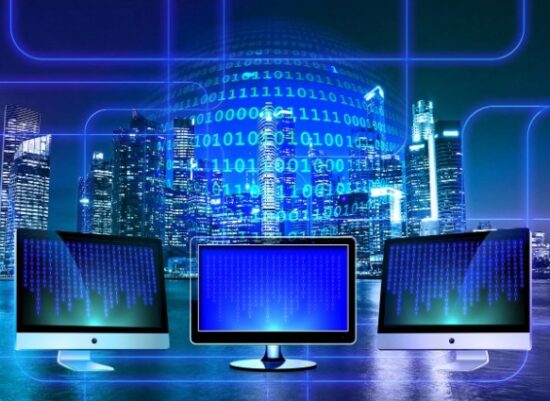Katie Brenneman is becoming a regular contributor of content here at 21st Century Tech Blog. Her many interests include writing on lifestyle, mental health, and sustainability. You can follow her on Twitter.
In this contribution, she has picked another timely topic: the digital transformation of our lives as exhibited by remote work as people stayed home during the two years plus of the pandemic, the growth of virtual office spaces, and changes in consumer behaviour in favour of e-commerce over bricks-and-mortar. When the pandemic finally peters out will we return to the past ways of employment and purchasing? Read what Katie has to say about these disruptive changes that are transforming much of the social fabric of our planet.
________________________________________________________________________
Today technology and business are intertwined. Indeed, the union of the two continues to transform the world as it has been doing since the beginning of the Industrial Revolution. The difference today from yesteryear is the pace of change. Today, we live in a fourth industrial revolution with technology in business more important than ever.
The primacy of technological innovation in the modern marketplace, however, means far more than simply increasing productivity and efficiency. Rather, its integration often radically alters the business. The term that describes this change is “digital transformation” and the ramifications, both positive and negative, are immense.
The Advent of the Virtual Office Space
The ascendancy of remote work is one example of digital transformation. It existed before the pandemic but has accelerated since. The spread of secure high-speed Internet today makes it possible for employees to no longer leave home to do important work, and do it with increasing productivity.
Because virtual offices can operate from the home or anywhere but a central office it means organizations are no longer constrained by geography in their hiring practices. Global teams now can collaborate in real-time in virtual meeting spaces. And many are exploring the use of augmented reality and virtual reailty (AR/VR) to help expand the scope of remote work. The rollout of 5G networks is accelerating the adoption of not just AR/VR but also 3D CAD modelling and the use of virtual presence through robot avatars.
There may be an environmental benefit to this digital transformation with fewer employees commuting daily, and fewer flights to meet with other company members or customers. But on the other hand, there is evidence that remote work environments create their own environmental sustainability issues. For example, employees who work from home consume more electricity than if working in a central office particularly if the company has outfitted its facilities with energy-efficient systems not reflected at an employee’s home, or sustainable recycling practices done at the office not duplicated remotely.
Expanding (and Contracting) the Market for Employees
The rise of the virtual office is changing not only where work gets done but also how it’s done. The world of work is becoming more accessible than before, particularly for historically disenfranchised groups. People with disabilities, caregivers, and those who live in remote areas now have more opportunities than ever before to engage in stable, well-paying employment in the digital domain.
This transformation comes with a downside. The digitalization of work threatens to significantly reduce the number of low-skill, non-technical jobs. This means workers need to cultivate an entirely new, and often far different set of valuable career skills than those they currently possess. Even those who are already technologically proficient are feeling the rapid pace of change. Continuous learning and what has been coined as “up-skilling” never seem to end.
Changing Markets
Digital transformation doesn’t just impact how businesses operate. It also changes how customers consume the business’s goods and services. A good example is the adoption of virtual reality and augmented reality in retail which is transforming how people shop whether online or in-store. Another example is the surging demand for telehealth services, especially in the wake of the COVID-19 pandemic which is disrupting the traditional ways patients and doctors interact.
Today’s consumers appear to be more interested in sampling merchandise virtually through smartphones, tablets, and laptops. Apps on mobile phones make it possible for customers while in brick-and-mortar stores to use AR to learn more about what is on shelves.
Patients are also seeing their relationships with doctors change, not always for the good. The lack of face-to-face presence means physicians are becoming more dependent on technology to decipher a diagnosis rather than their eyes, ears, and touch. What virtual appointments will mean for the future of general wellness in an aging population remains unknown.
What all these transformations in the consumer market mean, ultimately, is that businesses, employees and customers are going through continuous disruption. So what will happen as the remainder of this decade unfolds? Grand View Research expects the investment into the digital transformation will exceed $3.8 trillion US by 2030 with the fastest growth in healthcare focused on “making the patient journey easy by streamlining operations and correctly understanding the need of patients.”
The Takeaway
The ramifications of digital transformation for the future are vast and far-reaching. From the rise of the virtual workspace to the advent of e-commerce and digital shopping to digital doctor’s offices the disruption that lies ahead will have both positive and negative impacts.









